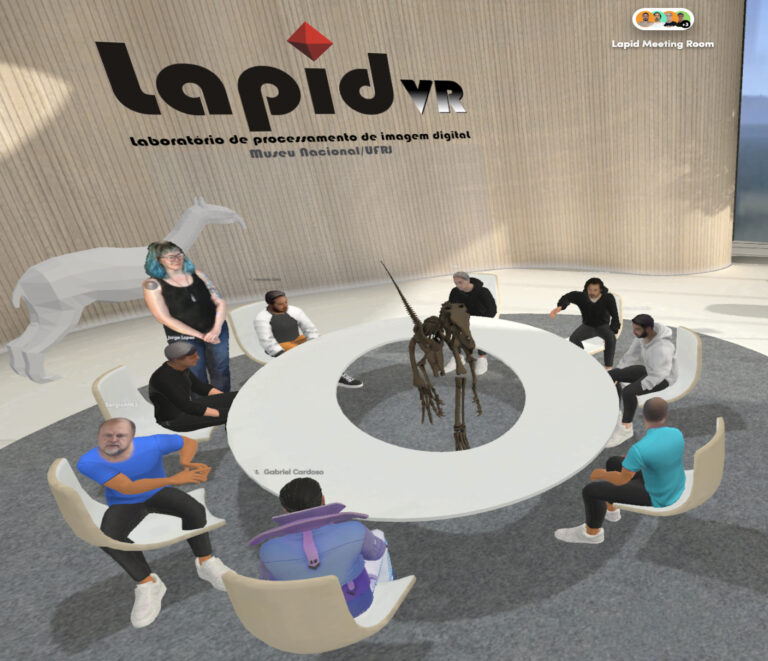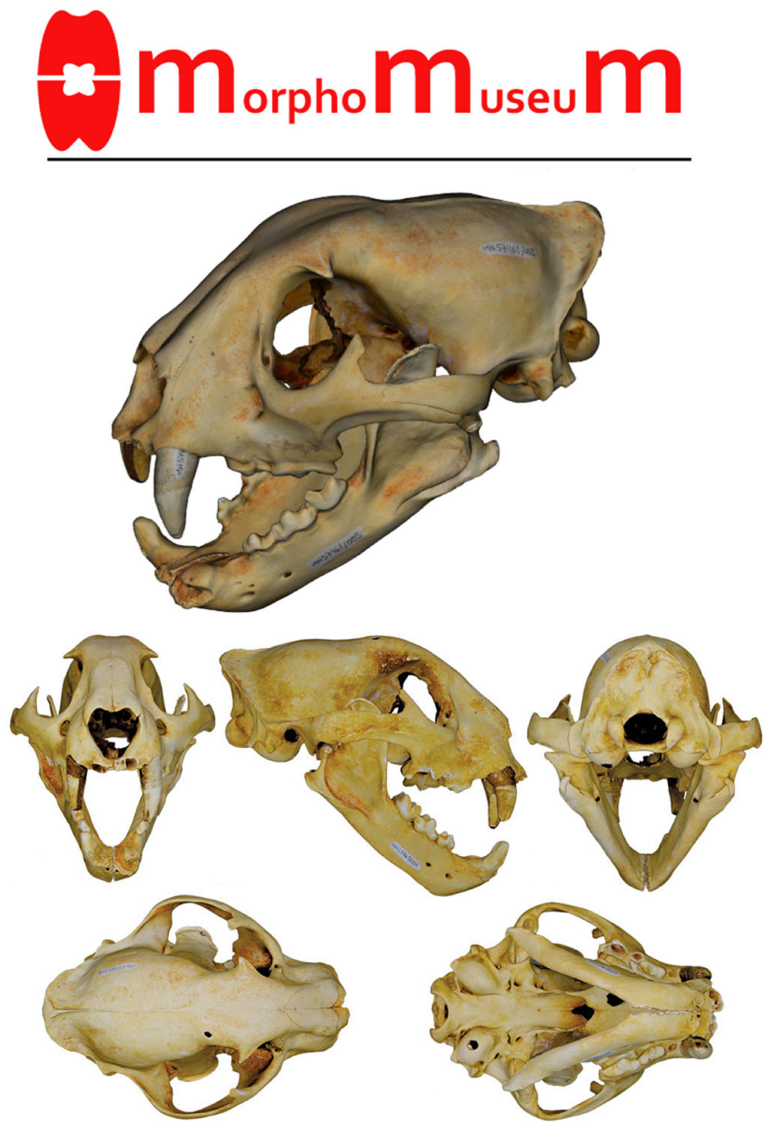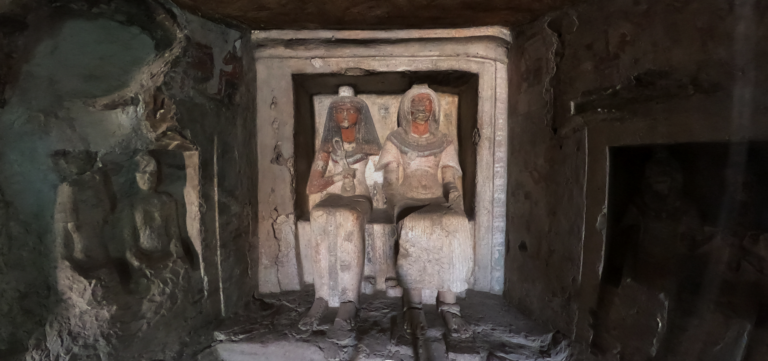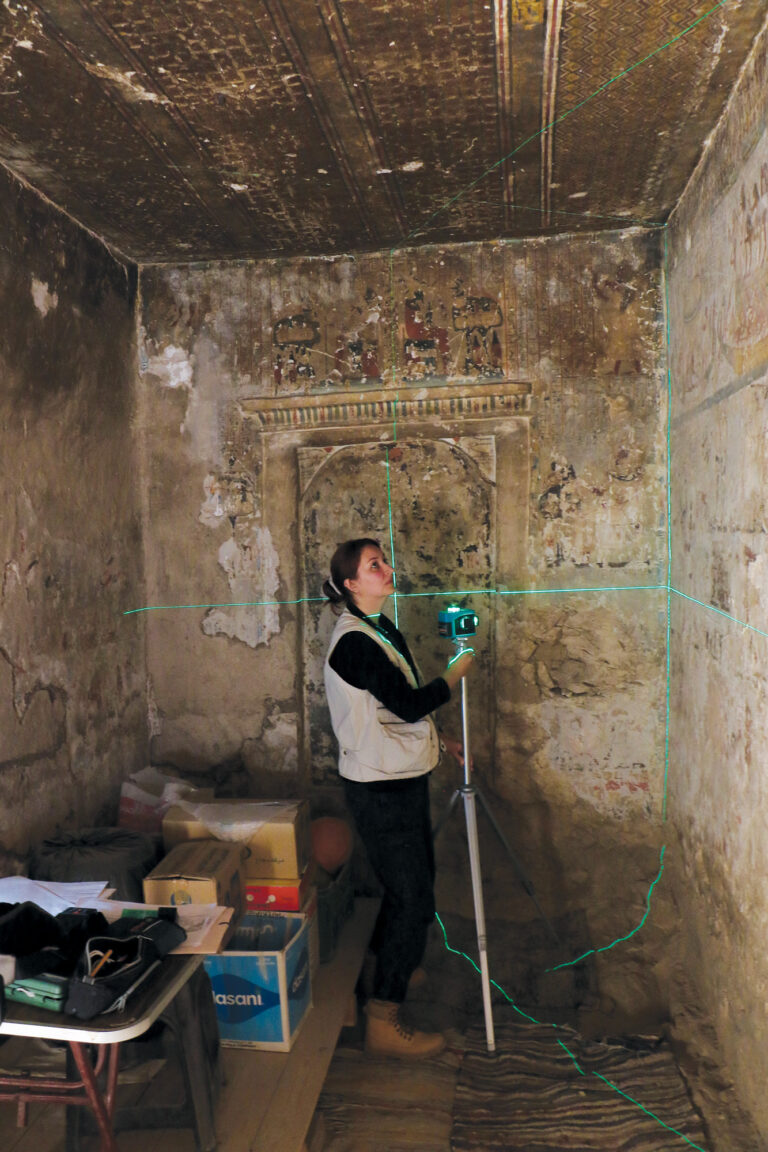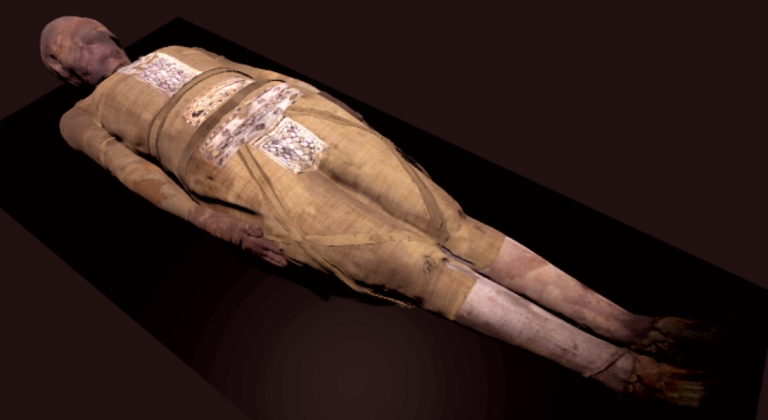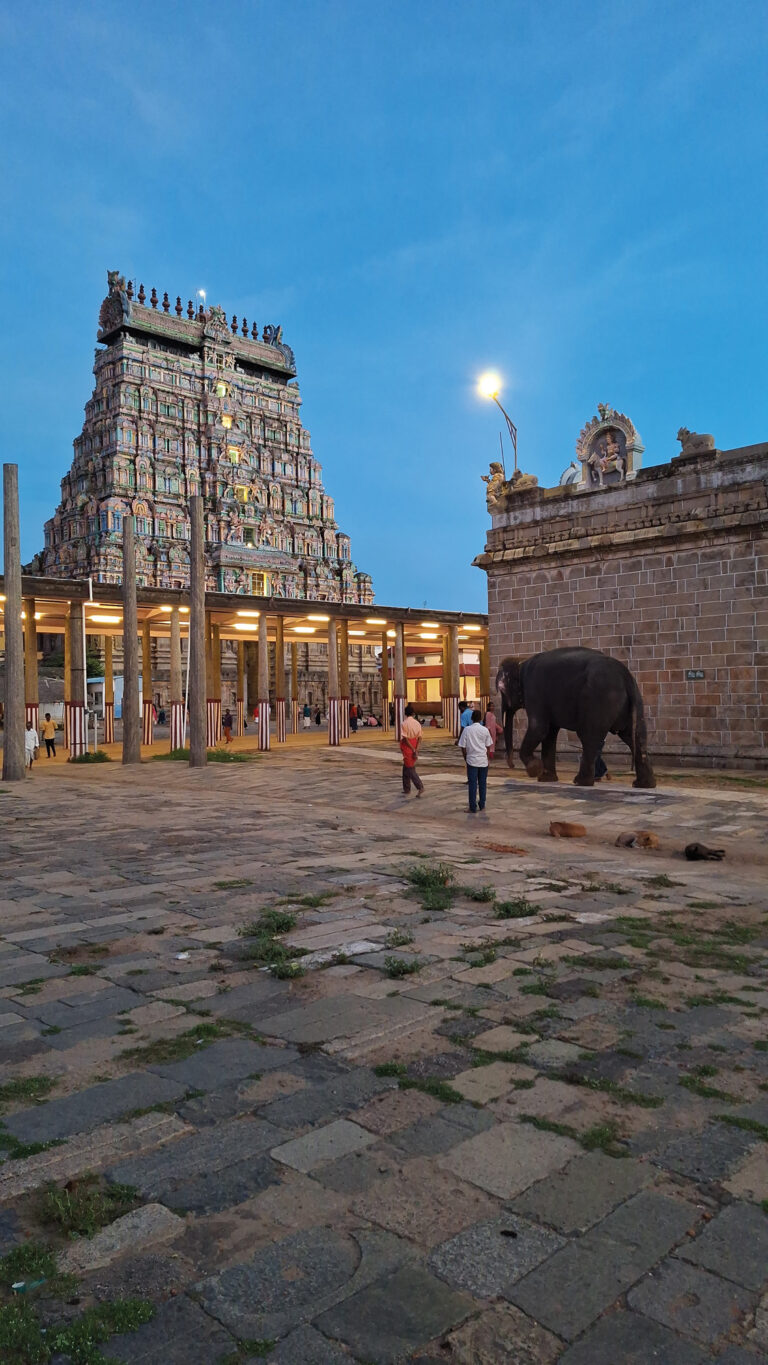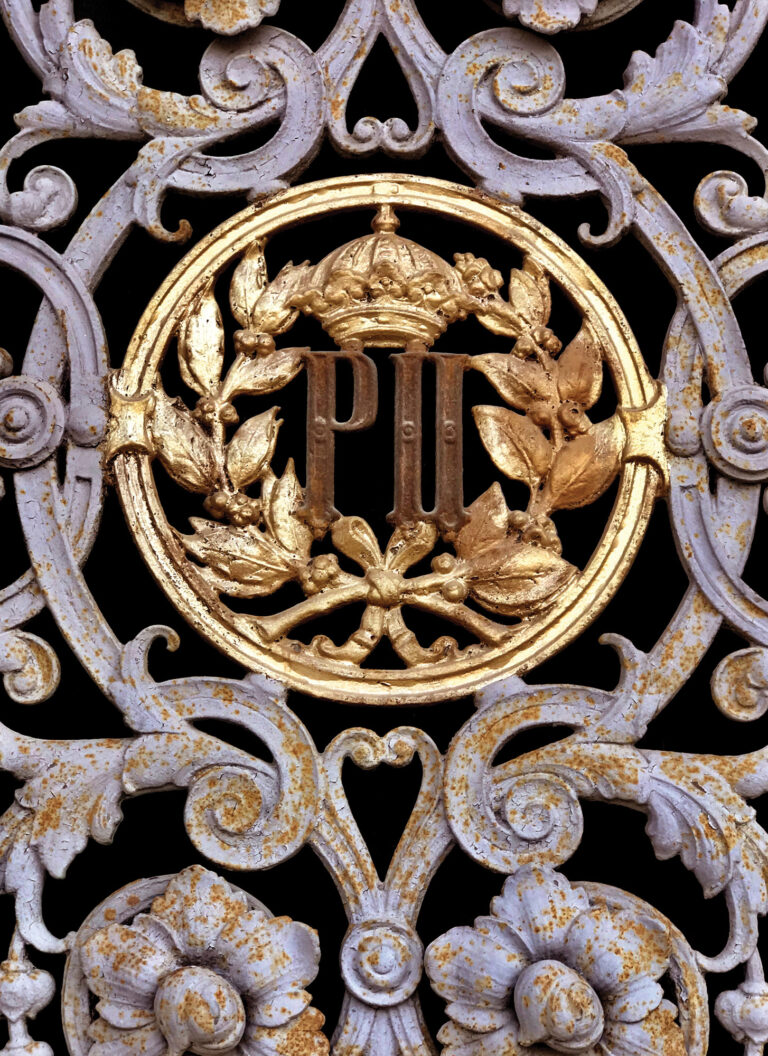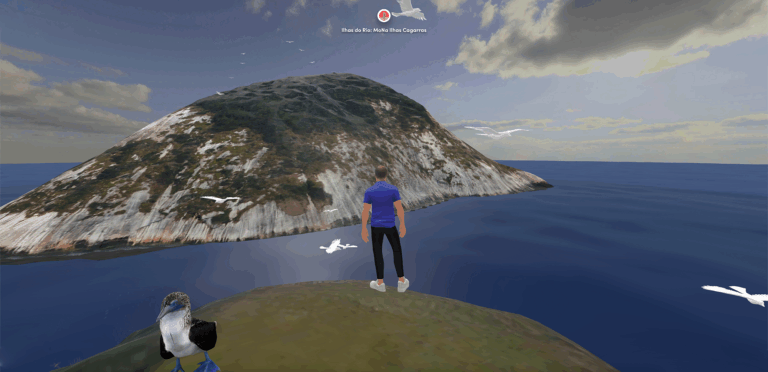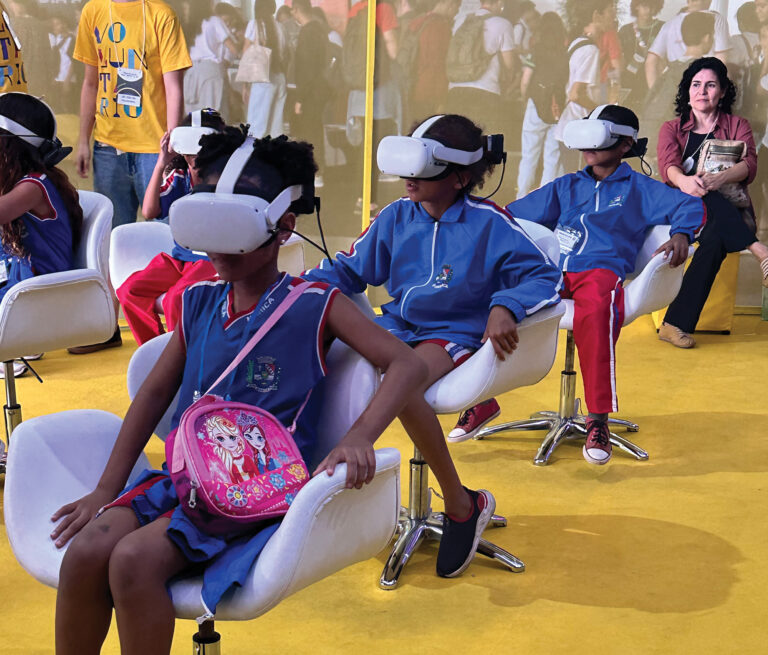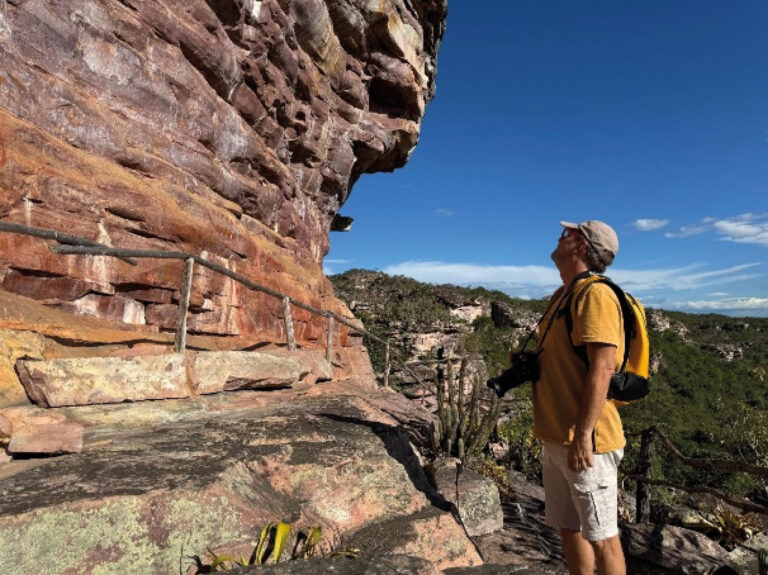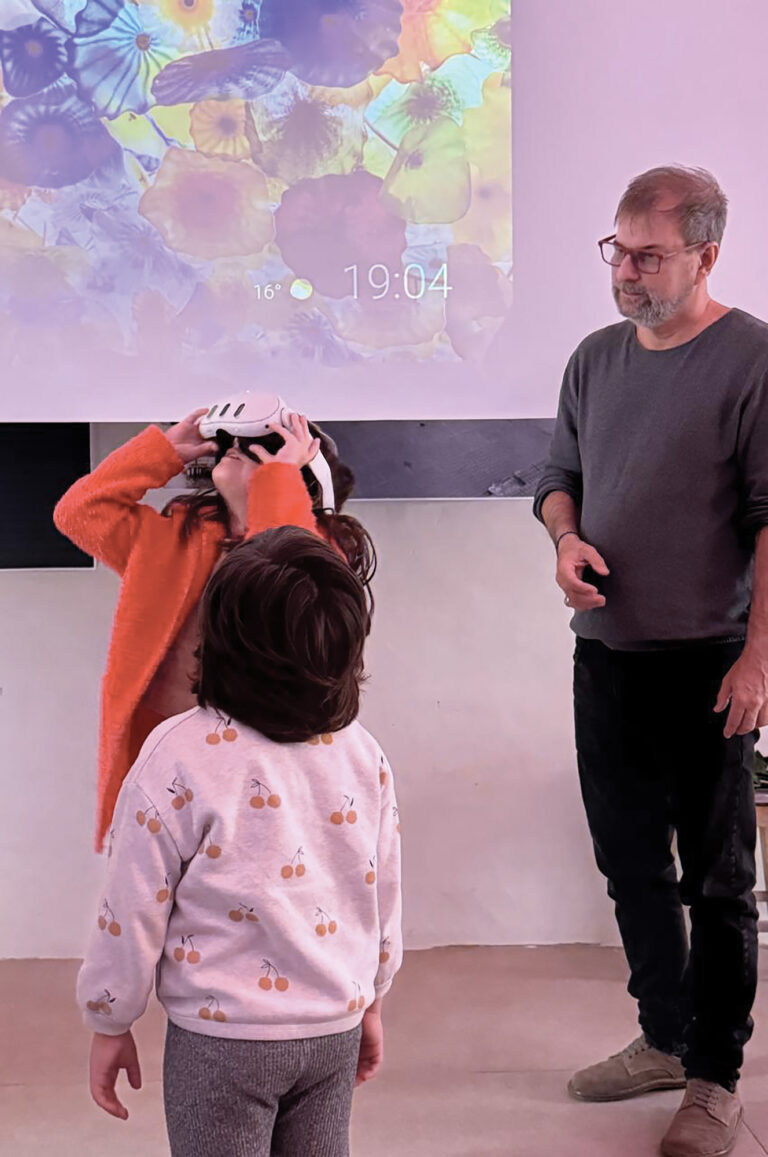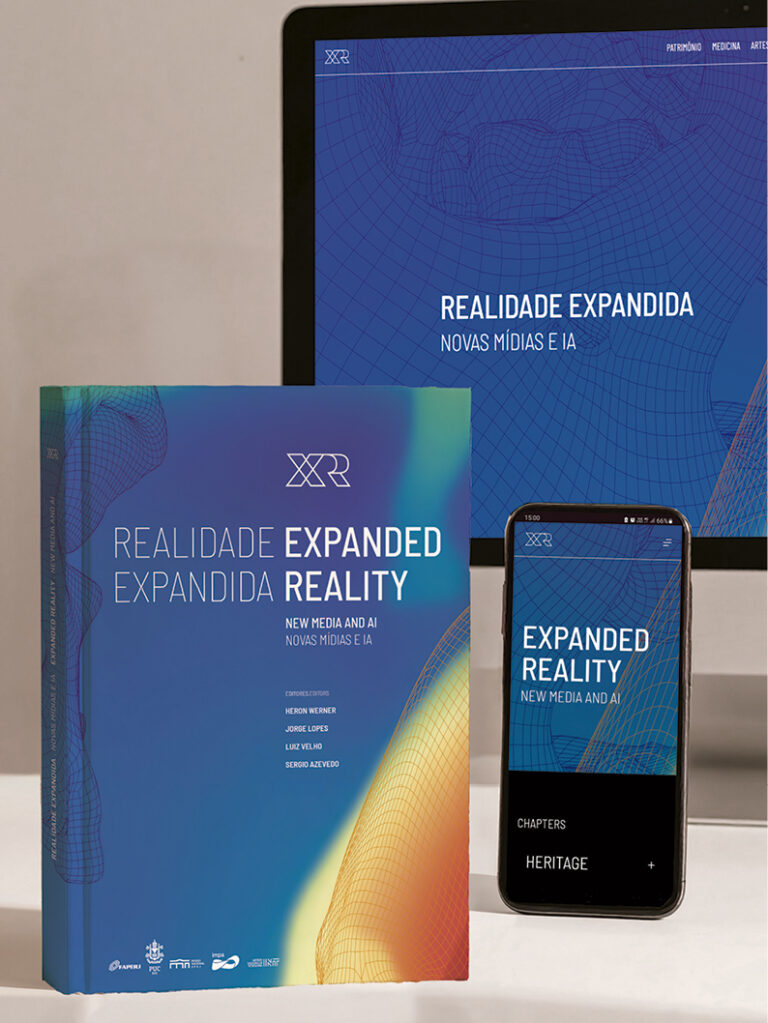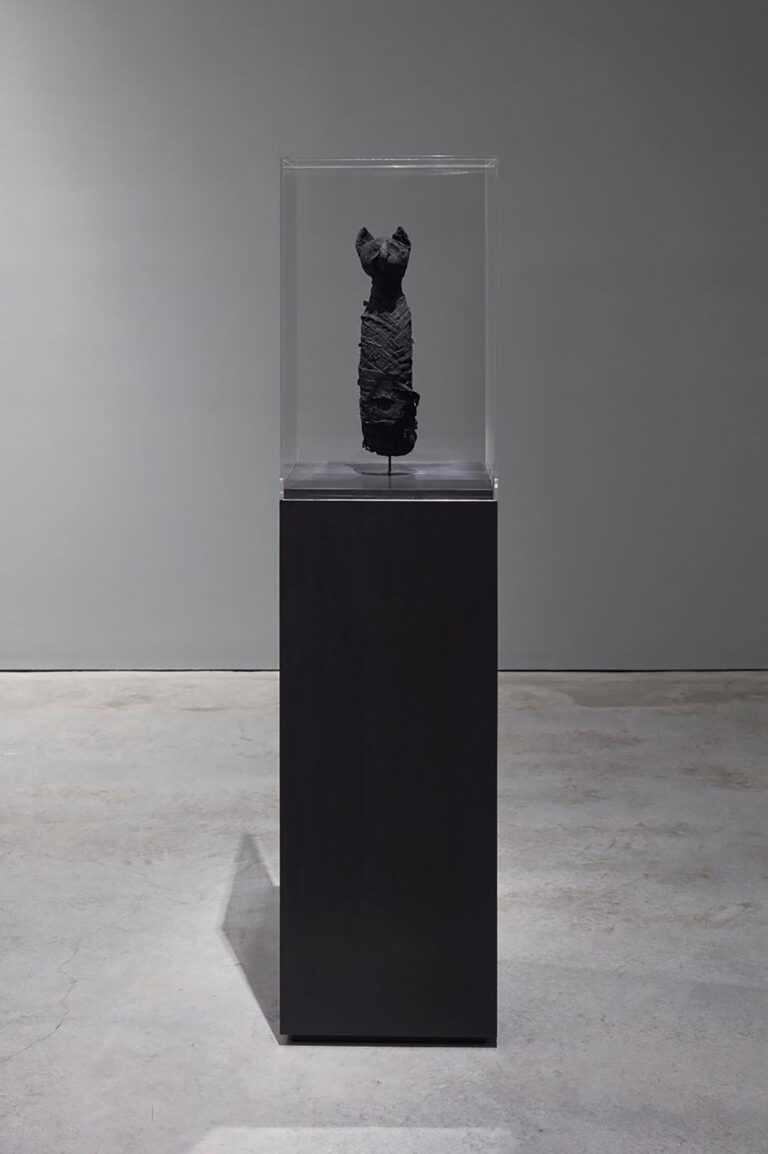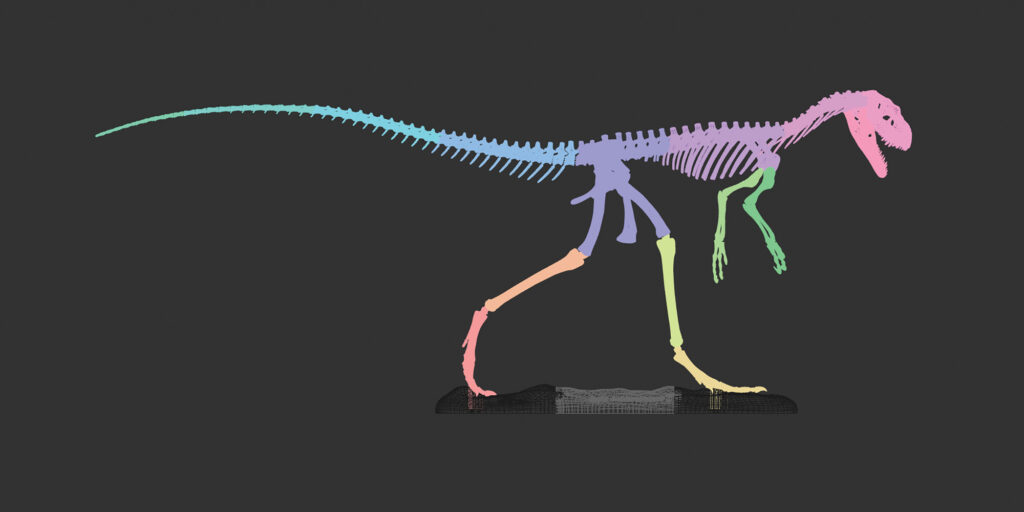
01. Staurikosaurus pricei
Staurikosaurus pricei was a carnivorous dinosaur measuring just over 2 meters long that lived during the Triassic period (about 230 million years ago), in what is now Rio Grande do Sul, Brazil. It was, therefore, one of the oldest dinosaurs in the world. Its fossil was formally described in 1970 by Edwin Colbert from a nearly complete skeleton, missing only the skull, arm bones and feet (COLBERT, 1970). In the early 2000s, its fossil was loaned to the National Museum where it served as study material for a new detailed description of the species (BITTENCOURT & KELLNER, 2009).
In 2005, the fossil was scanned in 3D to create a complete virtual three-dimensional reconstruction of its skeleton for studies in biomechanics and locomotion (GRILLO & AZEVEDO, 2011a, b). The modeling was done using Autodesk 3ds Max software, allowing for the retro-deformation process to correct distortions in some of the fossilized bones, as well as modeling broken or missing bones. The missing bones were created based on comparisons with closely related dinosaur species, such as Herrerasaurus ischigualastensis. The final 3D model was used in the monograph, master’s dissertation and doctoral thesis of the model’s author (GRILLO, 2005, 2007, 2014).
From this digital skeleton, the LAPID team decided to create what would be, at the time, the first reconstructed skeleton of a dinosaur to be fully physically prototyped and at real size using 3D printers (Figure 1). A Zcorp 310 printer was used for this purpose. The complete skeleton prototype was presented to the scientific community in 2011 during the IV Latin American Congress of Vertebrate Paleontology in San Juan, Argentina (GRILLO et al., 2011).
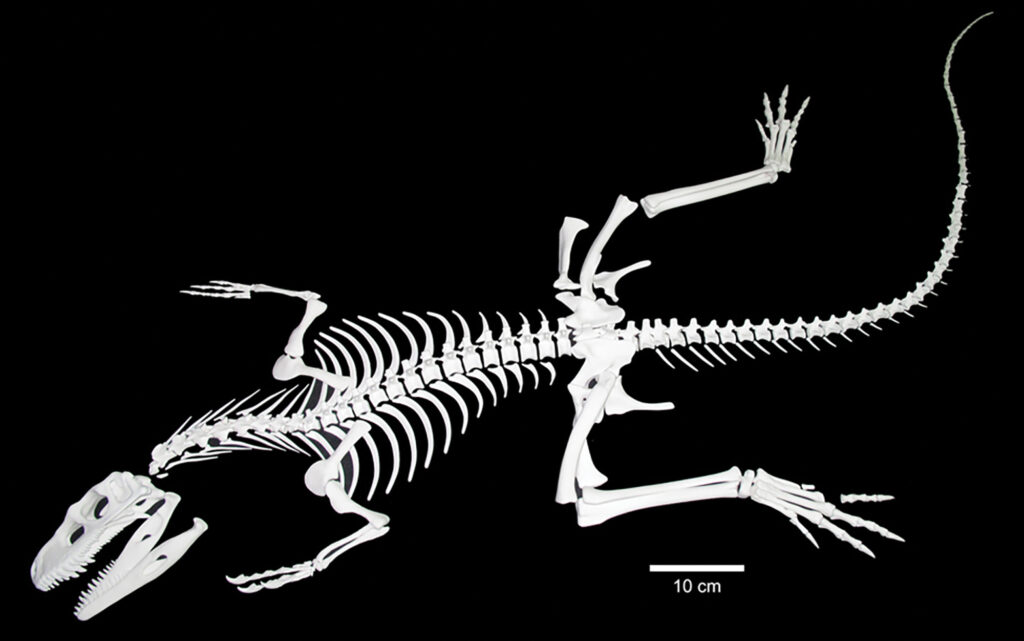
The bones were printed individually, so the skeleton had to be arranged on a table for display. It was usually assembled in a position resembling the arrangement of the real bones in the fossil.
Unfortunately, this model was lost during the 2018 fire at the National Museum. Along with this model, other dinosaur skeletons, assembled in the museum’s exhibition (but produced using traditional resin sculpting and molding methodologies), were also lost. Among these losses, we can highlight the complete skeleton of the sauropod dinosaur Maxakalisaurus topai, measuring about 12 meters long, and the skeleton of the theropod dinosaur Angaturama limai, about 6 meters long.
During the restructuring of LAPID, we acquired new equipment, including a filament 3D printer. In 2024, we decided to produce a new 3D print of the Staurikosaurus skeleton.
This time, however, we modified the virtual model to create a complete, fully articulated, self-supporting, life-size prototype of the skeleton, rather than individual bones (Figure 2).
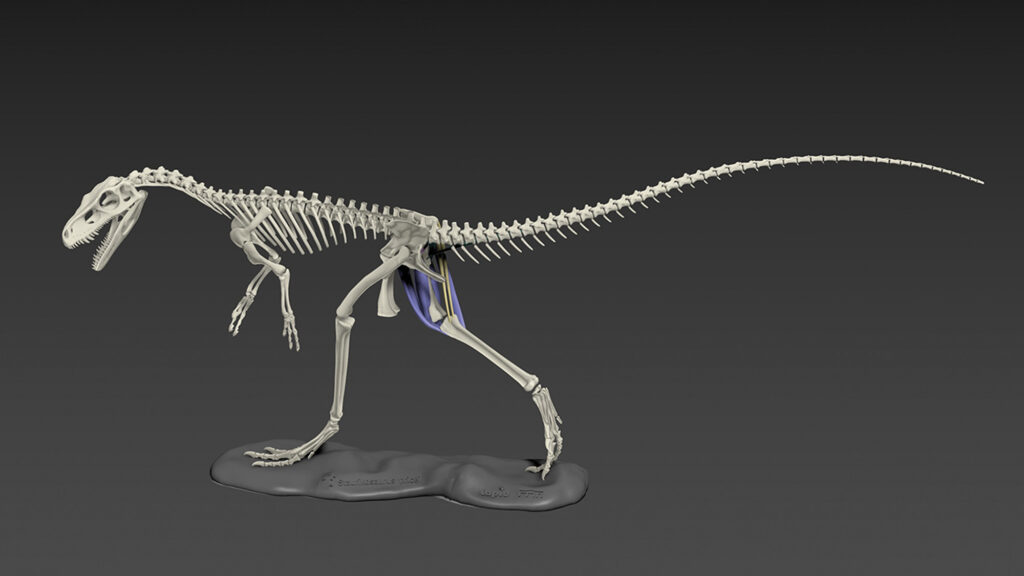
Using 3ds Max software, the virtual bones were joined with structures that simulate cartilage and ligaments (Figure 3), creating 15 sets of connected bones. Each set included fitting structures modeled to facilitate final assembly. Additionally, a 90cm long support base was modeled, divided into three parts with fittings. The 18 parts were designed to be printed in full size within the 30x30cm printing area of the 3D printer used (3D Creality K1 Max). The final 3D print was made using Hyper PLA filaments with a resolution of 0.4mm (Figure 4).
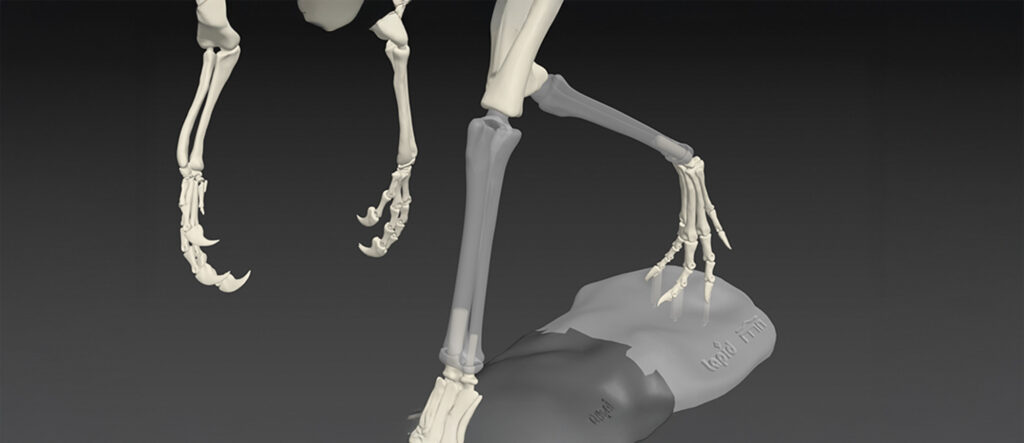
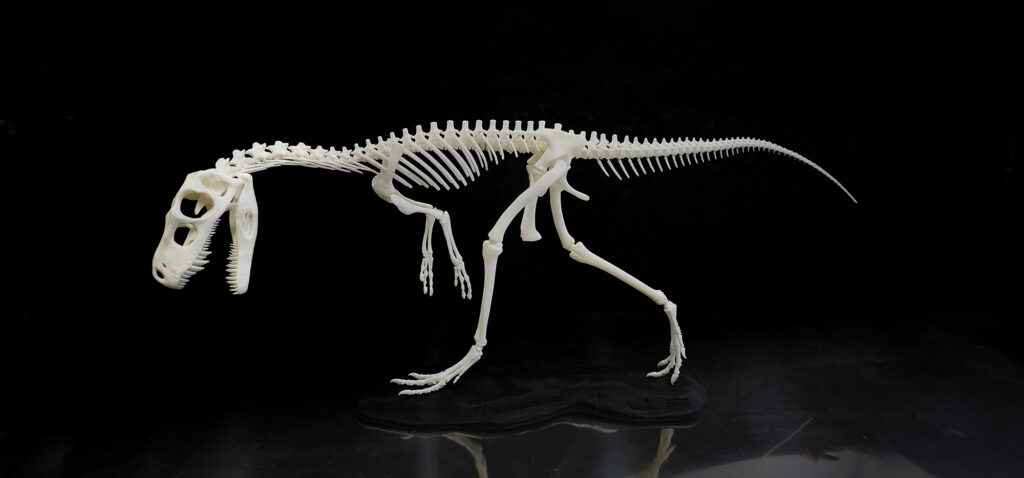
This pilot project served as a test to verify the viability of this technique for producing exhibition pieces. After printing, we discovered that the prototype was too flexible to be self-supporting. To avoid including visible supports, it was necessary to modify the prototyped skeleton by inserting a hollow metal shaft inside the spine. This and other small modifications enabled the skeleton to be used in an exhibition at the Museu Universitário Solar Grandjean de Montigny at PUC-Rio.
02. Maxakalisaurus topai
Also in 2024, the National Museum began work to produce a new copy of the skeleton of the dinosaur Maxakalisaurus topai, described in 2006 (KELLNER et al., 2006), for the reopening of its exhibitions. To assist in assembling the iron support structures, the LAPID team was asked to design the support hardware. To make this project possible, we decided to 3D scan (Revopoint Range Scanner) all the dinosaur’s bones from existing resin replicas that were not affected by the fire. Using these digital models of the individual bones, it was possible to virtually reassemble the skeleton and decide on its final position (Figure 5).
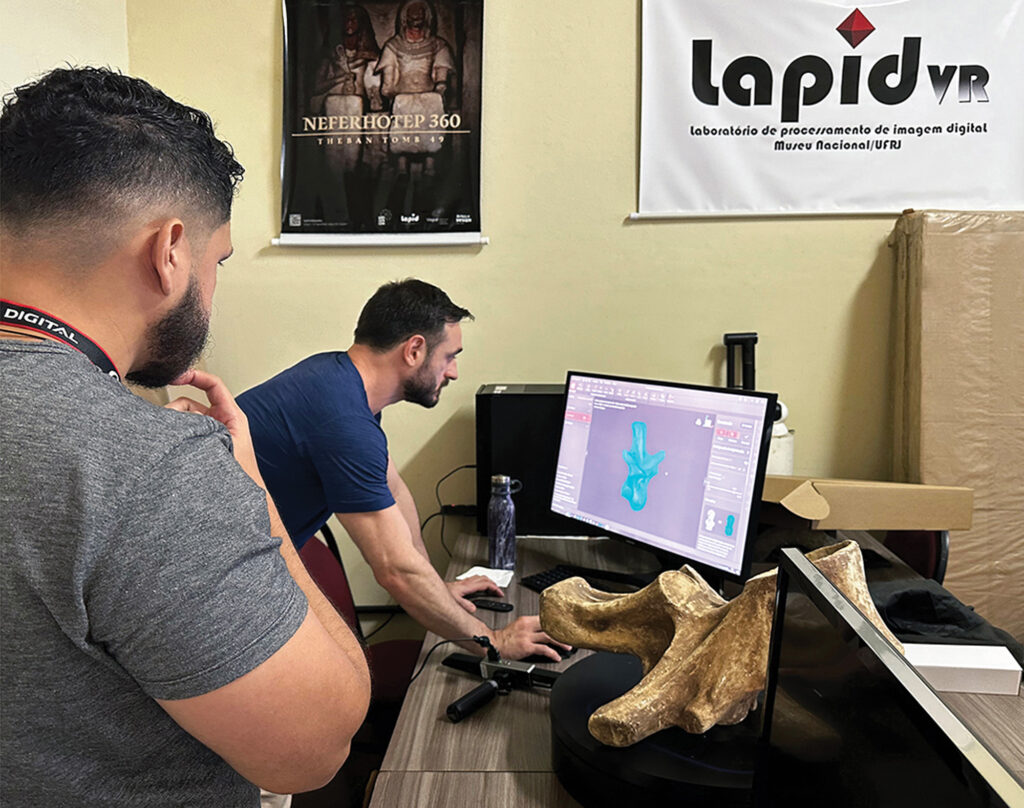
Traditionally, the process of assembling dinosaur skeletons involves a method that relies on trial and error to reach the final support structure that allows the bones to be assembled. Typically, several changes and corrections are necessary throughout the process. However, with the digital model, we can decide in advance the final position of the entire skeleton. Additionally, we can virtually model the entire support structure using metalon tubes, calculating the size of the segments, as well as the fitting and welding angles, all to minimize the amount of hardware visible in the final assembly (Figure 6). This work is still in progress and is expected to be completed in 2025.
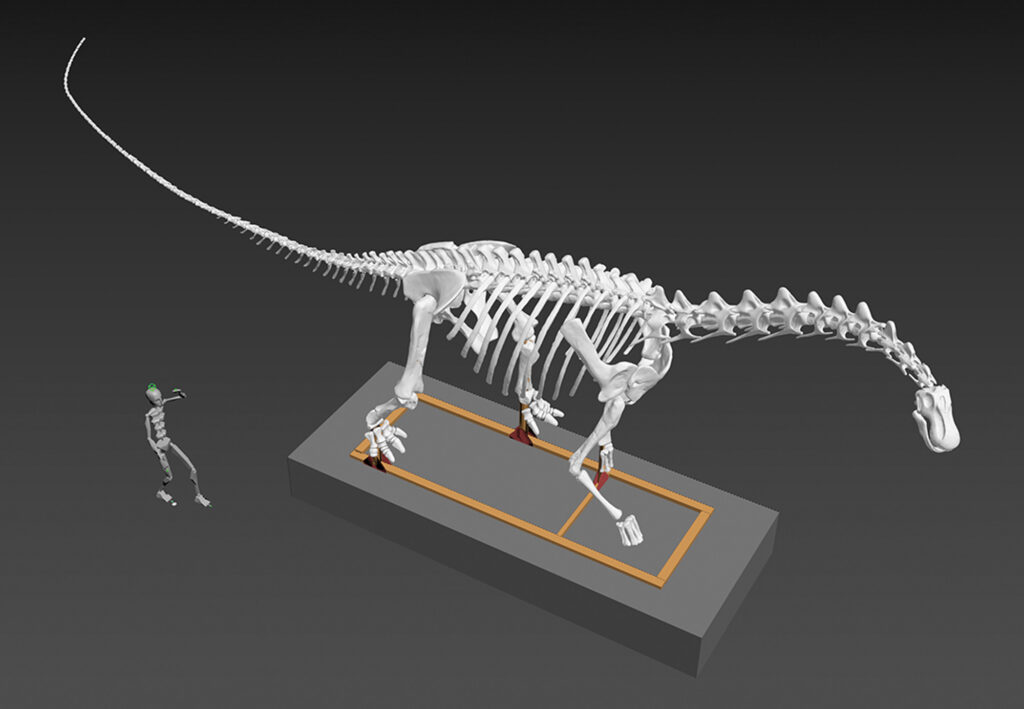
Taking advantage of the digitizing of the Maxakalisaurus skeleton, we also plan to produce a reduced-scale replica of its skeleton, using the same assembly process that was used for Staurikosaurus. The model is already being segmented into parts for printing. We will soon begin the necessary modifications to the virtual model to create the articulated parts and fittings to guide the final assembly of the skeleton. This model can be used in inclusive exhibitions, allowing people with visual impairments to experience what the Maxakalisaurus skeleton looked like.
The success achieved in the two initiatives reported here leads us to believe in the continuity of this type of procedure for producing replicas of other skeletons to support research and exhibitions, both of dinosaurs and other fossil vertebrates. This approach can, therefore, become the standard process for producing new skeletal assemblies.
This text reports on some of the activities developed by the research team of the Laboratory for Digital Image Processing (LAPID) with the aim of disseminating through the metaverse the teaching and research activities developed with the scientific-cultural collection of the National Museum/UFRJ. These activities are directly related to the link between LAPID and the Space-XR project: Research in Shared Metaverses. This project also involves the Biodesign Laboratory linked to PUC-Rio, as well as Visgraf at the Institute of Pure and Applied Mathematics-IMPA/MCTI. In this project, LAPID coordinated the Scientific-Cultural Heritage line.
References
BITTENCOURT, J. S. & KELLNER, A. W. A., 2009. The anatomy and phylogenetic position of the Triassic dinosaur Staurikosaurus pricei Colbert, 1970, Zootaxa 2079, pp. 1-56
COLBERT, E. H., 1970. A saurischian dinosaur from the Triassic of Brazil. American Museum Novitates, 2405, 1 – 60.
GRILLO, O.N., 2005. Reconstrução do esqueleto de Staurikosaurus pricei (Dinosauria, Theropoda): Uso de scanner laser 3D e modelagem virtual tridimensional para reconstruir vertebrados fósseis. Monografia (Bacharelado em Biologia, Modalidade Zoologia), Instituto de Biologia, Universidade Federal do Rio de Janeiro.
GRILLO, O.N., 2007. Miologia e biomecânica do membro posterior de Staurikosaurus pricei Colbert, 1970 (Dinosauria, Saurischia). Rio de Janeiro. Dissertação (Mestrado em Ciências Biológicas – Zoologia), Programa de Pós-Graduação em Zoologia, Museu Nacional, Universidade Federal do Rio de Janeiro.
GRILLO, O.N., 2014. Evolução morfofuncional da articulação da pelve de dinossauros Saurischia: Implicações na locomoção de Rhea americana e Staurikosaurus pricei. Rio de Janeiro. Tese (Doutorado em Ciências Biológicas – Zoologia), Programa de Pós-Graduação em Zoologia, Museu Nacional, Universidade Federal do Rio de Janeiro.
GRILLO, O. N.; AZEVEDO, S. A. K., 2011a. Recovering missing data: estimating position and size of caudal vertebrae in Staurikosaurus pricei Colbert, 1970. Anais da Academia Brasileira de Ciências (Impresso), v. 83, p. 61-72.
GRILLO, O. N.; AZEVEDO, S. A. K., 2011b. Pelvic and hind limb musculature of Staurikosaurus pricei (Dinosauria: Saurischia). Anais da Academia Brasileira de Ciências (Impresso), v. 83, p. 73-98.
GRILLO, O. N.; GIOIA. M. M.; BELMONTE, S. L. & AZEVEDO, S. A. K., 2011. Staurikosaurus pricei: modern studies. IV Congreso Latinoamericano de Paleontología de Vertebrados, San Juan, Argentina, 21 a 24/09/2011. Ameghiniana, 48(4): 56.
KELLNER, A.; CAMPOS, D. A.; AZEVEDO, S. A. K.; TROTTA, M. N.; HENRIQUES, D. D.; CRAIK, M. T. & SILVA, H. P., 2006. On a new titanosaur sauropod from the Bauru Group, Late Cretaceous of Brazil. Boletim do Museu Nacional, Rio de Janeiro, 74:1-31.
